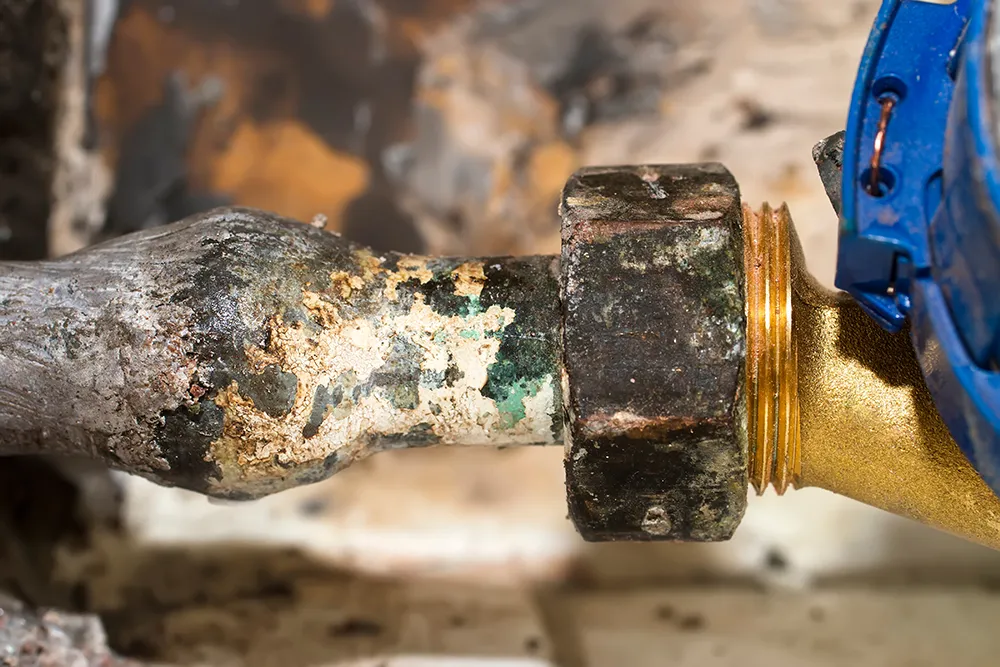What is lead?
Lead is a toxic heavy metal. It is relatively easy to form and has a comparatively low melting point. Because of these properties, lead pipes were used to transport water for a long time. Since lead was found to be a health hazard in 1973, its use in drinking water pipes and domestic plumbing has been banned. It is relatively easy to see whether lead pipes are still installed in a house. They are very soft and can even be nicked with a fingernail. They also have a silvery shimmer. Less well-known is that lead is still used in small quantities, e.g. in water fittings.
How does lead get into drinking water?
In buildings constructed before the 1970s, there is a possibility that lead pipes are still installed. Even if the lines have been renewed, old connecting pieces may still exist. Therefore, especially in old buildings, there is a risk of lead pipes contaminating the tap water.
However, pollutants can not only enter the drinking water through house installation. Also, tap fittings can cause lead contamination.
What are the consequences of lead in drinking water?
Consuming tap water containing lead over time can lead to chronic poisoning. Symptoms are not immediately noticeable, but the extent of damage that can occur is significant. Lead inhibits blood formation, damages the kidneys and can lead to infertility and gastrointestinal problems. Lead is also considered carcinogenic and damages the nervous system. Even small amounts of lead are problematic for babies and children. Their mental development is particularly endangered by lead exposure. In the worst case, it can cause encephalopathy, which is usually fatal if left untreated and leaves severe permanent damage in survivors. Therefore, pregnant women should never drink tap water that has flowed through lead pipes.
Lead in drinking water: Who is responsible?
Due to the danger for pregnant women and babies, even with small amounts, the limit value for lead in drinking water was lowered to 10 micrograms per litre according to the UK Drinking Water Ordinance. However, the long-term goal is for UK water to become lead-free. In other words, no more lead can be detected.
Although the waterworks supply excellent quality water, they cannot guarantee that it will come out of the tap similarly. This guarantee is ultimately the responsibility of the landlord or homeowner. Therefore, it is worthwhile to have your tap water tested.
Lead in drinking water: What to do?
If lead has been detected in drinking water or if it has been determined that lead pipes are still in the house, the water should not be drunk under any circumstances, especially not by small children, babies and pregnant women. Furthermore, it should no longer be used for food preparation. The source of the contamination must be identified to make the elimination of the problem possible. Apart from old lead pipes or invisible connecting materials in the house installation, water tap fittings can also cause lead-contaminated water.
To quickly determine whether your tap water is contaminated with lead, you can have your water tested. A water testing kit of IVARIO is the right choice to obtain clarity.


